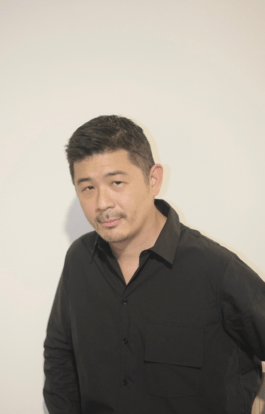



© Yoha Jin
COLLECTIBLE
Three questions to
November 2023
Today we have the pleasure of talking to Aric Chen, a general and artistic director at Nieuwe Institute at Rotterdam. As member of the jury to the MAIN, BESPOKE and NEW GARDE Sections 2024, he shares insights into the role of collectible design in the industry and the latest developments at the Nieuwe Instituut, the Dutch museum for architecture, design, and digital culture...
COLLECTIBLE: What initially drew you to the world of collectible design, and how has your involvement in this field evolved over the years?
Aric Chen: It was never a question for me, even pre-dating my days as a design history student, that design is about more than function. It’s as much a cultural field as anything else—one at the intersection of making and meaning. As it happened, my early days as a design writer in New York coincided with the rise of what was then called “design-art,” now known as collectible design. This was more than 20 years ago, and the idea that design went beyond function, and could even be purposely non-functional, was sometimes a difficult concept to explain. In some ways, it still is. But as a writer, museum curator—and, at one point, the curatorial director of a collectible design fair—getting into the minds of especially the designers in this area has opened up new worlds.
C: As a professional in the design industry, how do you see the role of collectible design in pushing the boundaries of creativity and innovation within the broader design landscape?
AC: Collectible design creates space for experimentation. That being said, I sometimes cringe at the term. To define such work as being “collectible” almost sounds as if it exists solely to create a market. But then again, that’s fair enough. Because seen another way, collectible design relies on patronage—on collectors who will support it, not because they need another chair to sit on, but because there are new ideas or methods to explore that the mass market can’t accommodate. At the same time, some of these ideas will filter out, and in that sense, you could think of collectible design as being design’s R&D department.
C: What have you been up to recently? Which recent project would you like to draw attention to?
AC: For the past two or three years, I’ve been in Rotterdam, heading the Nieuwe Instituut, which is the Netherlands’ national museum and institute for architecture, design and digital culture. We in fact have an R&D department, in addition to our collection, exhibitions and public programs, and it is this constant questioning of assumptions, exploration of new frontiers and dissolving of disciplinary and other boundaries—all of which is deeply embedded in the institute—that for me makes it an incredibly special place.

© Johannes Schwartz

© Johannes Schwartz
COLLECTIBLE
Three questions to
November 2023

© Yoha Jin
Today we have the pleasure of talking to Aric Chen, a general and artistic director at Nieuwe Institute at Rotterdam. As member of the jury to the MAIN, BESPOKE and NEW GARDE Sections 2024, he shares insights into the role of collectible design in the industry and the latest developments at the Nieuwe Instituut, the Dutch museum for architecture, design, and digital culture...
COLLECTIBLE: What initially drew you to the world of collectible design, and how has your involvement in this field evolved over the years?
Aric Chen: It was never a question for me, even pre-dating my days as a design history student, that design is about more than function. It’s as much a cultural field as anything else—one at the intersection of making and meaning. As it happened, my early days as a design writer in New York coincided with the rise of what was then called “design-art,” now known as collectible design. This was more than 20 years ago, and the idea that design went beyond function, and could even be purposely non-functional, was sometimes a difficult concept to explain. In some ways, it still is. But as a writer, museum curator—and, at one point, the curatorial director of a collectible design fair—getting into the minds of especially the designers in this area has opened up new worlds.
C: As a professional in the design industry, how do you see the role of collectible design in pushing the boundaries of creativity and innovation within the broader design landscape?
AC: Collectible design creates space for experimentation. That being said, I sometimes cringe at the term. To define such work as being “collectible” almost sounds as if it exists solely to create a market. But then again, that’s fair enough. Because seen another way, collectible design relies on patronage—on collectors who will support it, not because they need another chair to sit on, but because there are new ideas or methods to explore that the mass market can’t accommodate. At the same time, some of these ideas will filter out, and in that sense, you could think of collectible design as being design’s R&D department.
C: What have you been up to recently? Which recent project would you like to draw attention to?
AC: For the past two or three years, I’ve been in Rotterdam, heading the Nieuwe Instituut, which is the Netherlands’ national museum and institute for architecture, design and digital culture. We in fact have an R&D department, in addition to our collection, exhibitions and public programs, and it is this constant questioning of assumptions, exploration of new frontiers and dissolving of disciplinary and other boundaries—all of which is deeply embedded in the institute—that for me makes it an incredibly special place.
Contact
info@collectible.design
VIP PORTAL
EXHIBITOR PORTAL
PRIVACY POLICY
© 2025 Collectible
Contact
info@collectible.design
VIP PORTAL
EXHIBITOR PORTAL
PRIVACY POLICY
© 2025 Collectible